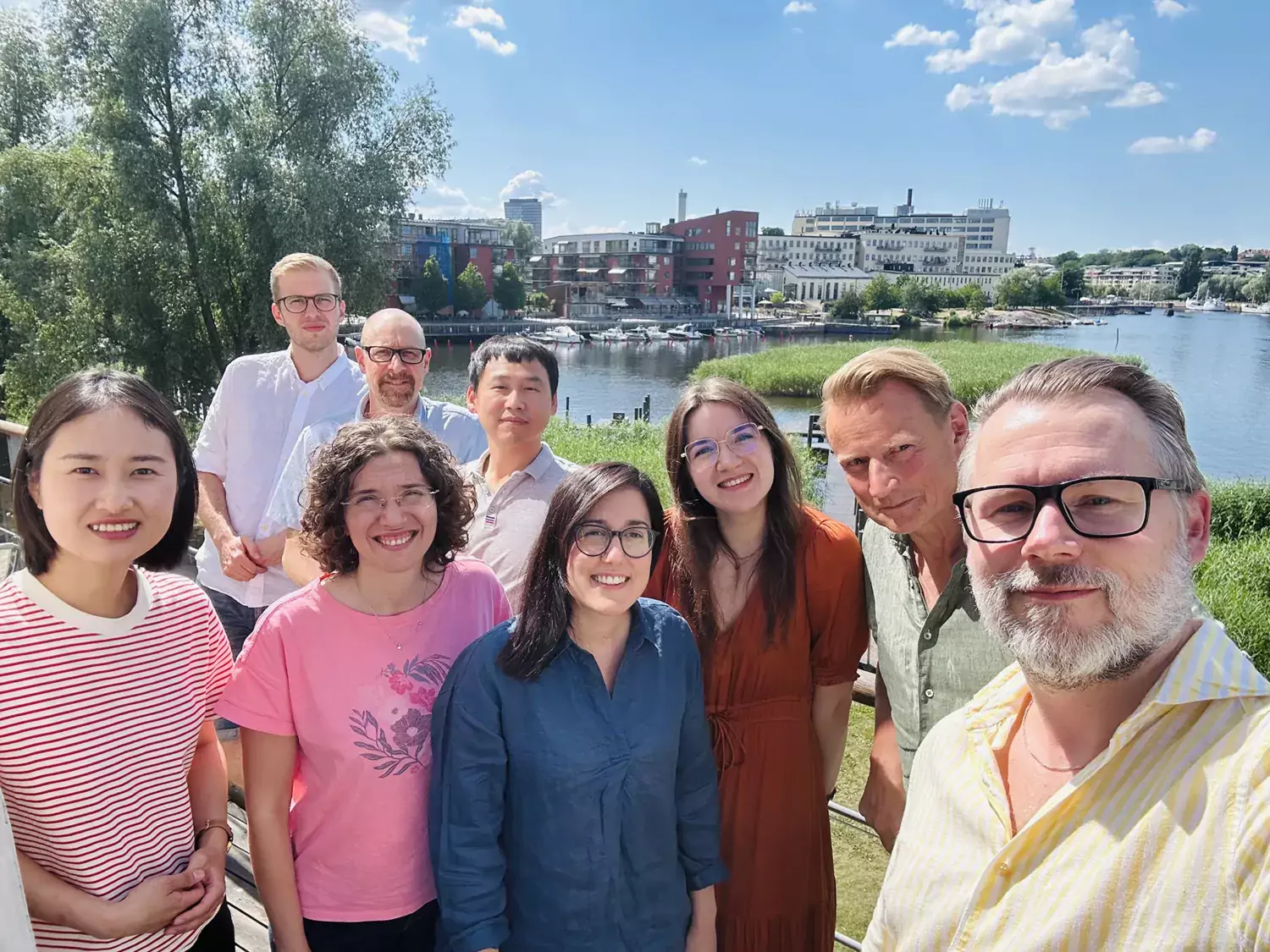The research group collaborates nationally and internationally with academic institutions and the pharmaceutical industry. Our translational research is conducted at Karolinska Institutet, ANA Futura in Flemingsberg, in close collaboration with Karolinska University Hospital in Huddinge.
Our research
Viral hepatitis
Viral hepatitis remains a major global health challenge, with approximately half a billion people infected worldwide. The primary viruses responsible for liver inflammation are hepatitis A, B, C, D, and E. These infections can range from mild to severe and are associated with symptoms such as jaundice, fever, myalgia, nausea, fatigue, vomiting, fatty liver, cirrhosis, liver failure, and liver cancer.
Prophylactic vaccines are available for hepatitis A, B, and D, but not for hepatitis C and E. Antiviral treatments exist for hepatitis B, C, and D, though their effectiveness varies depending on the specific virus.
Our research aims to develop an immunotherapy that both neutralizes circulating virus particles and eliminates infected cells by activating virus-specific neutralizing antibodies and T cells targeting HBV and HDV. This dual approach is designed to limit viral spread and clear HBV- and HDV-infected cells. We hope to advance this strategy to clinical testing in the near future.
Crimean-Congo Hemorrhagic Fever (CCHF)
In two European Union-funded projects, we are developing vaccines against Crimean-Congo Hemorrhagic Fever (CCHF). CCHF is caused by an RNA virus belonging to the Nairoviridae family and is transmitted primarily by Hyalomma ticks, which are found in parts of Europe, Africa, the Middle East, and Asia. Due to climate change, there is an increasing risk of the virus spreading to new regions. Transmission to humans occurs through tick bites, contact with infected livestock, or exposure to blood and tissues from infected animals or individuals. High-risk groups include healthcare workers, abattoir staff, and residents of endemic rural areas. The virus causes severe hemorrhagic fever outbreaks, with a case fatality rate ranging from 10% to 40%.
Our role in these projects is to evaluate various vaccine candidates and platforms to develop a safe and effective vaccine against CCHF. We are responsible for the preclinical evaluation of these candidates and coordinating efforts toward clinical testing. Currently, we are conducting a Phase I clinical trial in healthy volunteers to assess the safety and immunogenicity of a DNA-based vaccine delivered by in vivo electroporation. The study began in November 2024 and is expected to be completed during 2025.
Link CCHF Vaccine: https://www.cchfvaccine.eu
Link CCHF VACIM: https://www.cchfvacim.eu
SARS-CoV-2
Severe acute respiratory syndrome coronavirus 2 (SARS-CoV-2) is the causative agent of coronavirus disease 2019 (COVID-19). In most cases, the infection leads to mild to moderate respiratory symptoms that do not require medical intervention. However, individuals with underlying health conditions and older adults are at greater risk of developing severe illness and experiencing fatal outcomes.
The aim of our research is to deepen our understanding of SARS-CoV immunology in order to develop a vaccine that elicits a broad humoral and cellular immune response against multiple SARS-related coronaviruses. Most current vaccines target only the spike (S) protein, which has proven highly effective but is vulnerable to mutations that may reduce neutralizing antibody responses and limit cross-protection against emerging SARS-CoVs.
Our vaccine strategy involves targeting multiple viral proteins to stimulate a more broadly reactive immune response. By incorporating more than one antigen, we aim to enhance both antibody and T cell responses, thereby improving protection against current and future SARS-related coronaviruses.
Link OPENCORONA: https://ki.se/en/research/opencorona
Immuno-therapies
Our aim is to develop next-generation immunotherapies that harness the body's own immune system to fight cancer. A central focus is the identification of T cell receptors (TCRs) and other immunological receptors that can specifically recognize neoantigens - mutated peptides uniquely expressed by tumor cells. Once identified, these receptors are used to engineer therapeutic immune cells, including TCR-T cells, and other cell-based therapies, enabling precise and personalized cancer treatment. We are also innovating in the area of cell manufacturing, developing new platforms to efficiently generate genetically modified immune cells. These include both viral and non-viral engineering strategies, optimized for safety, scalability, and regulatory compliance. In addition, our group explores factors that influence therapeutic efficacy in the tumor microenvironment, such as hypoxia and immune evasion mechanisms, with the goal of designing therapies that are more resilient in hostile tumor conditions. Our translational efforts bridge basic discovery, preclinical validation, and clinical pipeline development.

